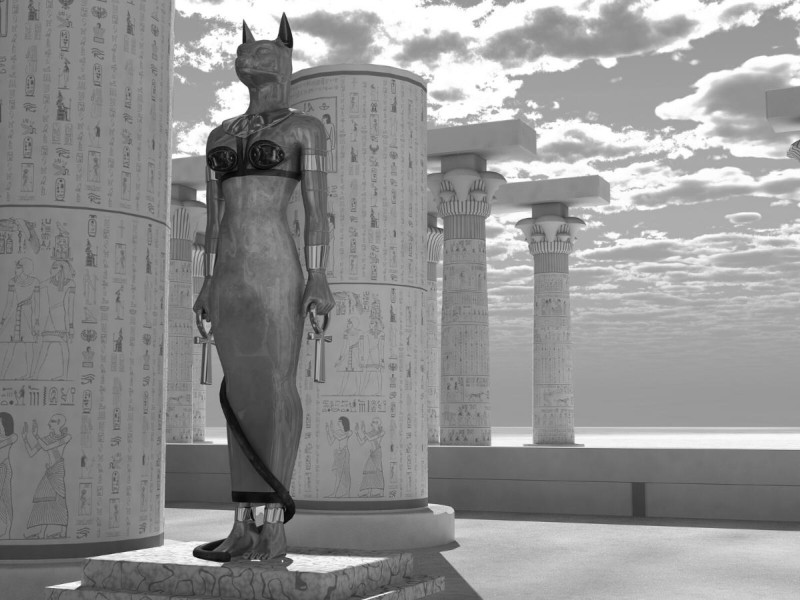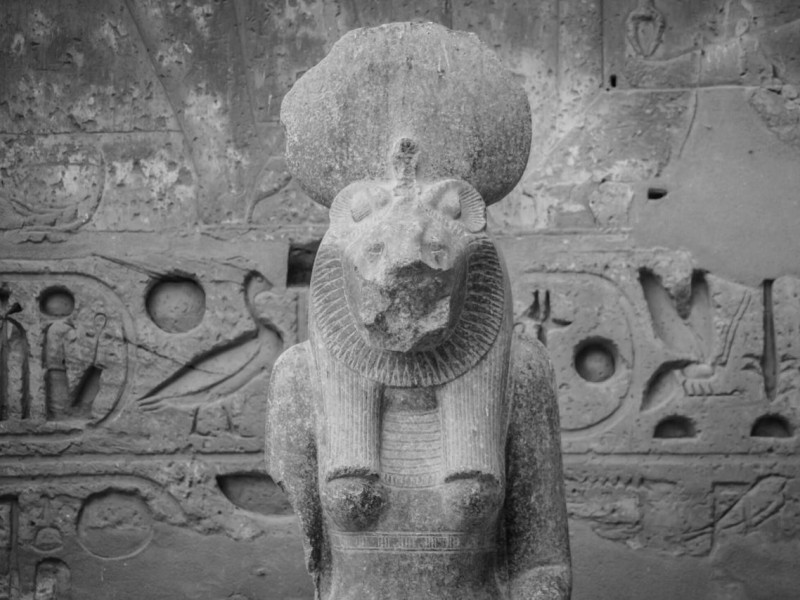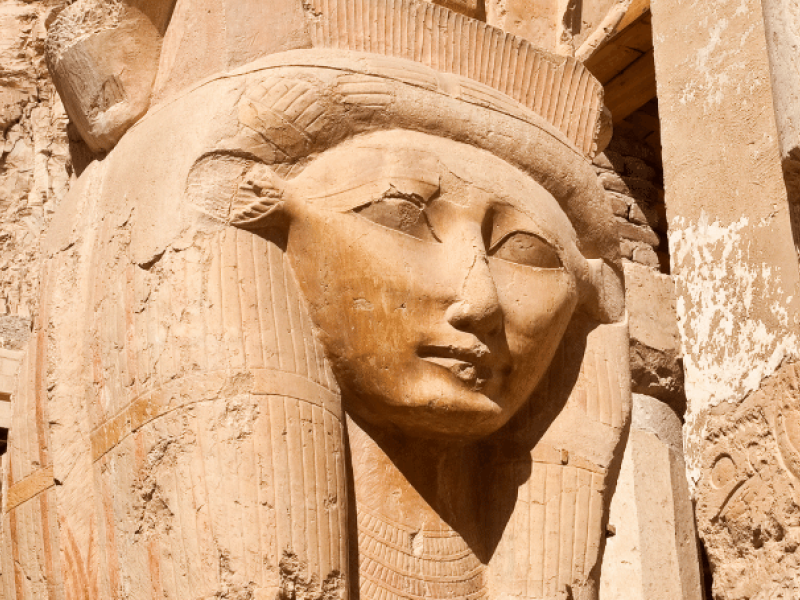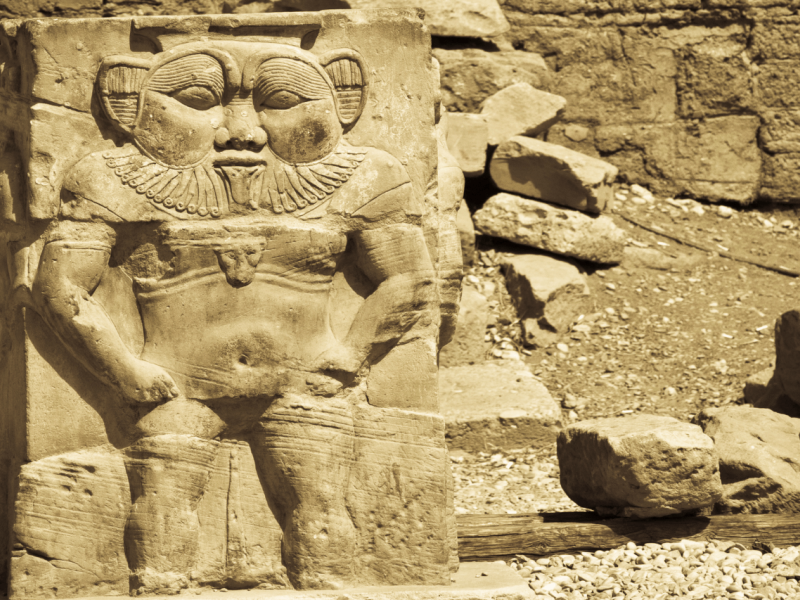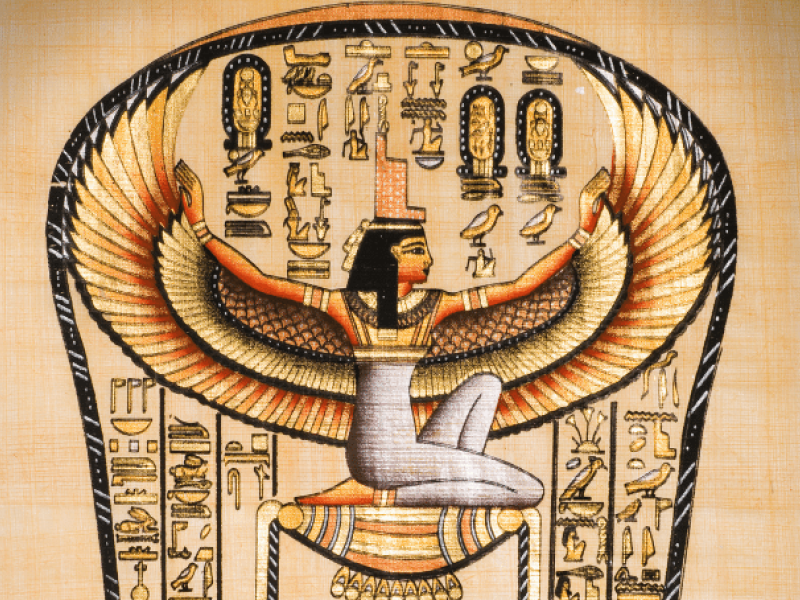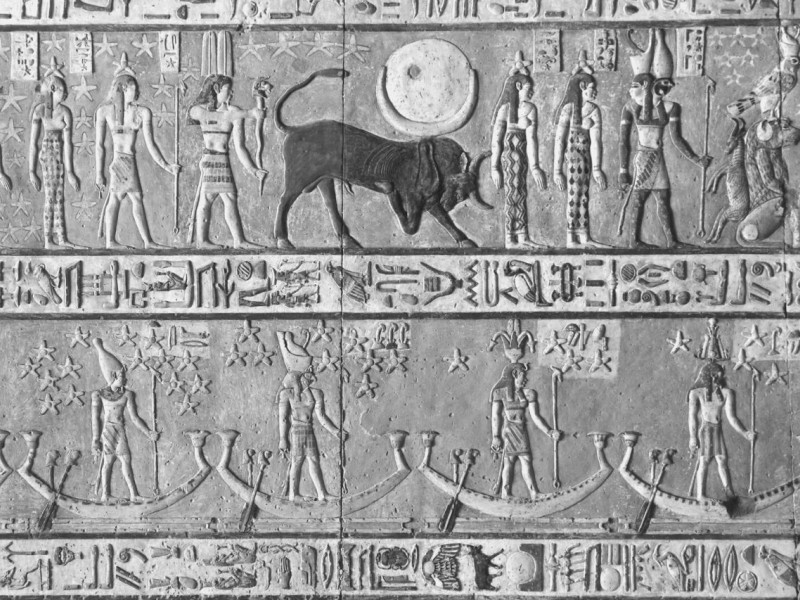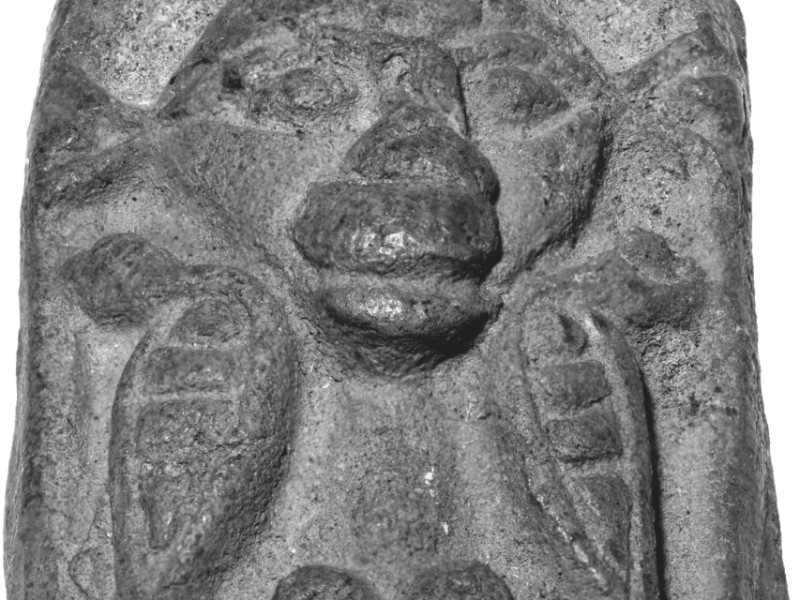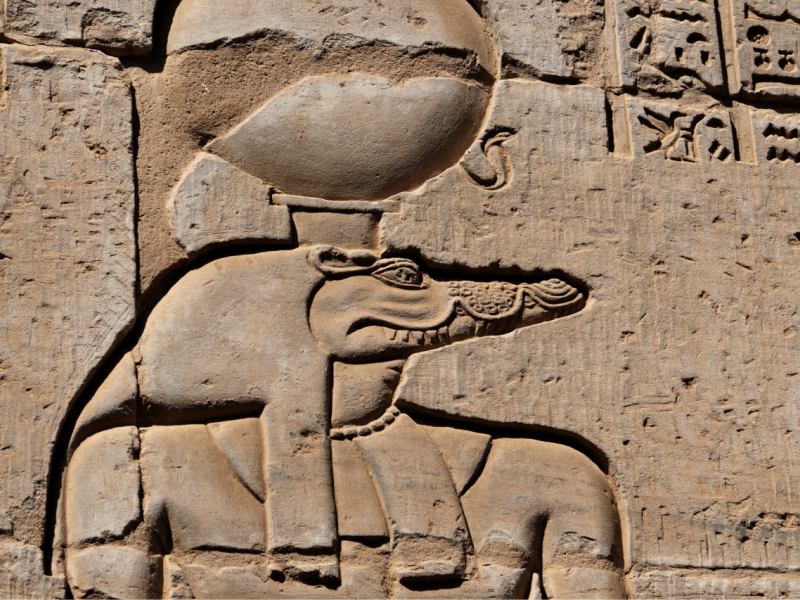Bastet
Bastet: The Secrets of The Most Powerful and Popular Feline Goddess
The Egyptian goddess Bastet was worshipped for around 3,000 years. One could argue that cat lovers still honor her today whenever they adopt a feline friend. Given the enduring popularity of the domestic cat, it is no wonder that Bastet was one of the most revered deities in ancient Egypt. Read this article to know more about this mysterious cat goddess!
Bastet in Egyptian Culture and Mythology
Bastet’s role in Egyptian mythology was not a static one. Egyptians made a habit of adjusting the personas of their gods to fit their needs over time. Sometimes, these changes occurred to satisfy the dualistic nature of their belief system, holding the universe in balance through a series of opposites. In other instances, Egyptians created new myths to explain or preserve significant events — such as battles or the domestication of the cat — in collective memory.
Cats were extremely important to Egyptian culture. They hunted mice and other vermin, which protected crops and controlled the spread of disease. Around the house, they took care of cobras and other pests and provided low-maintenance companionship. Because of this, Egyptians revered cats and often adorned them with gold jewelry.
Killing a cat in Egypt was considered a heinous crime worthy of a death sentence. Since the Egyptians strove to commemorate all things in their myths, they needed a deity to represent such a favored beast.
Bastet in the Early Period of Egypt
In the early period of Egypt, the goddess Bastet and her sister Sekhmet were very close in the collective imagination. Both were anthropomorphized with the head of a lioness. Together, they served as protectors of the kings of Upper and Lower Egypt and defenders of their father, Ra. Over time, Sekhmet fulfilled the need for the fierce warrior lioness, and Bastet assumed the cat’s role to oversee all aspects of domestic life.
Bastet’s widespread popularity as the Egyptian cat goddess leads many to forget her many other attributes. There is much more to learn and discover about this beloved deity.
Who Was Bastet in Egyptian Mythology?
Because of Bastet’s long history, she relates to many different aspects of domestic life. Besides being the goddess of cats, Bastet was the goddess of health, fertility, and childbirth. She also governed the pleasurable activities of existence, such as music, dancing, celebrations, and perfume. Her protective nature continued to associate her with safety during warfare long after she traded her lion’s head for a cat’s.
Women enjoyed great respect in Egyptian society and had almost the same rights as men. In this context, Bastet had the task of protecting women and their secrets. She also served as a role model of a strong, powerful woman herself. However, her cult was not limited to female worshippers. Unlike in other societies, women with strength of character did not intimidate Egyptian men. The feline goddess was as appealing to men as she was to women.
In the earlier years of her worship, Egyptians associated Bastet with the sun and the solar system because of her father, Ra. She and two of her sisters assumed the collective name of the Eye of Ra. Another name for Bastet was also the Eye of the Moon.
The Depiction of Bastet in the Book of the Dead
In the Pyramid Texts and the Egyptian Book of the Dead, Bastet makes an appearance as the protector of the dead as they travelled to their final rest. She was painted in tombs as a cat with glowing eyes that chased away darkness and evil spirits.
In the Pyramid Texts, she was called upon as the mother of the deceased, whose confessions she listened with pragmatism. Also, the book described the pharaoh’s heart as being “like that of Bastet, when he ascends and lifts himself into the sky.” This alludes to the pharaoh’s association with Ra and his journey to the heavens in the sun-boat, with his daughter Bast at his side.
The Image of Bastet
Images of Bastet often portrayed her in a seated position, either in full cat form or with only a cat’s head. She wore or carried an aegis, the wide rounded collar originated as a type of armor. One famous Bastet statue showed her wearing an earring and a nose piercing. Classically, she carried a sistrum, which was a percussion instrument that resembles a rattle. On occasion, she was pictured holding an ankh (symbol of life) or a was-scepter (symbol of strength).
Naturally, cats were sacred to Bastet. In Egyptian imagery, she is often close to a litter of kittens. Even in her later, more domesticated persona, she retained an association with the lioness. Sometimes in artwork, she held a mask with a lion’s face, implying that she never forgot her roots.
Bastet’s Confusing Name
The meaning of Bastet’s name is elusive, and scholars differ when it comes to the correct translation and pronunciation. It began as Bast, Baset, Bꜣstt, or Ubaste, depending on the region. The Egyptian word bas or bꜣs is written in hieroglyphics as an oil jar, which could refer to healing ointments or Bastet’s son Nefertum — the god of perfume. Ointments and precious oils were often kept in jars made of alabaster, a word containing the same root sounds as the goddess’s name.
Some scholars believe bas was given the extra -t sound to ensure proper pronunciation and emphasize Bastet’s feminine nature. Others note that the final -t sound was often silent, so her name would likely still be pronounced as Bast. Egyptologists today most often use Bastet, as it was more common in the late dynastic periods.
Sources record that she was sometimes called Bast ba’Astet, which translates as the Soul of Isis. Though scholars differ, Bastet was sometimes considered the daughter of Isis. Horus was also called by the same epithet, influencing some to believe that Bastet and Horus were twins. In ancient Greece, Bastet and Horus were associated with the twins Artemis and Apollo.
Bastet’s Family History
Like the rest of Bastet’s attributes, stories of her parentage shifted over time. Initially, myths narrated that she was the daughter of Aten, the self-born primordial deity. However, as the cult of Ra took prominence, most of the myths of Aten faded. Thereafter, Bastet was considered the child of Ra. Most mythologists agree that Ra was her only parent. Still, Isis could likely have been her mother, as the Bast ba’Astet variation of her name suggests.
Three of Ra’s daughters — Bastet, Sekhmet, and Shu — were highly favored by their father, and together they were called the Eye of Ra. Some sources record other goddesses who also had that moniker, including Hathor, Tefnut, Wadjet, and Mut.
Since Bastet and Sekhmet were so similar in the early years of their worship, many people confused their stories. It is unclear which of the sisters married Ptah, the god of craftsmanship. It may be possible that worshippers in both cults accepted Ptah as the consort of their goddess.
The Offspring of Bastet
Ptah and Bastet had two sons. Like his mother, Maahes was a lion-headed god and a fierce warrior. Nefertum was born from a lotus flower, and so was associated with perfumes and other things with pleasant smells.
The Relationship Between Anubis and Bastet
The relationship between Anubis and Bastet is obscure and is likely corrupted by modern fan fiction. A few older texts suggested that Bastet was the mother of Anubis, but the more accepted myth credits his parentage to Osiris and Tefnut. Popular art suggests that Anubis and Bastet may have been lovers.
In reality, there was little to link the two characters besides the services they performed for the dead. Anubis was in charge of the embalming process, and Bastet likely provided the oils and ointments he needed to preserve the bodies of the deceased properly.
Bastet’s Changing Nature
As early as 2900 BCE, people revered Bastet as a fierce lioness goddess who was not shy of causing bloodshed and carnage to protect the kings. Often called the Lady of Slaughter of the Lady of Dread, she could defeat cities equally well with war, plague, or natural disasters.
Bastet was one of several lioness goddesses in early Egyptian myths. Madfet was likely the first of these warrior felines. In time, Bastet, Sekhmet, Mau, Tefnut, Shu, Menhit, and others joined her ranks. Since lionesses hunt in packs, Egyptians would have seen this multiplicity as a natural part of their belief system. Over time, the lesser-known goddesses were absorbed into the mythologies of the more popular deities, chiefly Bastet and Sekhmet.
Bastet’s Nature in Early Myths
Early myths related that Bastet accompanied her father, Ra, in his daily trip across the sky. She rode with him in the sun barge and protected Ra from Apep, the god of chaos. Apep — or Apophis in later texts — manifested as a giant serpent who tried to devour the sun. Bastet’s duty was to fend off the snake with a knife, earning her the epithet of Lady of the Flame. Some sources attributed this job to Seth before his evolution into a more nefarious god.
During the Third Intermediate Period
Around the Third Intermediate Period of Egypt, Bastet’s image turned to that of a domesticated cat. Her protective nature began to focus more on certain aspects of daily life. Cats are prolific creatures with good maternal instincts, so it seemed natural to grant Bastet dominion over mothers, pregnancy, and childbirth.
Her association with health and protection came from the fact that domestic cats killed rats and other vermin that spread disease, allowing for bountiful harvests. It is also interesting that Bastet could vanquish ghosts and evil spirits, which brings to mind the role of the black cat in modern Halloween celebrations.
Despite the transition to a more domesticated role, she often retained her original ferocious nature. This was in part due to her worshippers situated in the Nile Delta, who passionately resisted the unification of Upper and Lower Egypt. When she wore a lion’s head, she was a fierce defender of the crown of Lower Egypt, and her devotees expected her to continue protecting the kingdom.
Bastet’s Long History of Worship in Egypt
Though scholars are unsure when Bastet emerged, vessels adorned with the figure of a lioness can be dated to about 2850 BC. Her cult spread throughout Egypt, especially in Lower Egypt and the Nile Delta. It was centered in the city of Bubastis, which is near present-day Zagazig. In the Egyptian language, the city was called Pr-bꜣstt, or Per-Bastet, meaning the House of Bast.
According to Herodotus, Bastet’s temple was an amazing sight. He visited the city in the 5th century BCE and described it in great detail:
“Save for the entrance, it stands on an island; two separate channels approach it from the Nile, and after coming up to the entry of the temple, they run round it on opposite sides; each of them a hundred feet wide and overshadowed by trees.
The temple is in the midst of the city, the whole circuit of which commands a view down into it; for the city’s level has been raised, but that of the temple has been left as it was from the first so that it can be seen into from without.
A stone wall, carven with figures, runs round it; within is a grove of very tall trees growing round a great shrine, wherein is the image of the goddess; the temple is a square, each side measuring a furlong.
A road, paved with stone, of about three furlongs’ length, leads to the entrance, running eastward through the marketplace, towards the temple of Hermes; this road is about 400 feet wide and bordered by trees reaching to heaven.”
-Herodotus, Histories, Book II.138
Both men and women served as clergy in the temple, which provided various services, including food and medical assistance. Indeed, all activity in the city centered around the temple.
Bastet’s Worshipping Practices
The water channels from the Nile surrounded the temple on three sides, forming a lake or moat called an ishru. Those who came to worship Bastet dropped sacrifices into the ishru, whose waters served to cool the anger of the goddess. Prayers often included requests for protection, health, and prosperity. Infertile women made offerings in the hope she would help them conceive a child.
Since cats were sacred to the people and Bastet, the death of a beloved cat would cause such great sadness that a family might shave off their eyebrows in mourning. Egyptians would mummify their beloved deceased cats and dedicate them to the goddess, bringing them to the temple as tribute. During excavations at the temple, archaeologists uncovered more than 300,000 mummies of cats.
Worship of Bastet often included poetry, music, and dancing, which promoted mental health and general well-being. For the festival of Bastet in April and May of each year, around 700,000 worshippers would arrive at Bubastis, often on large, crowded ships. Those on the vessels would taunt those on land, encouraging them to abandon their mundane duties and join the festival.
The Worship of Bastet in the Words of Herodotus
Herodotus described the arrival of the throng:
“When the people are on their way to Bubastis, they go by river, a great number in every boat, men and women together. Some of the women make a noise with rattles, others play flutes all the way, while the rest of the women, and the men, sing and clap their hands.
As they travel by river to Bubastis, whenever they come near any other town, they bring their boat near the bank; then some of the women do as I have said, while some shout mockery of the women of the town; others dance, and others stand up and lift their skirts.
They do this whenever they come alongside any riverside town. But when they have reached Bubastis, they make a festival with great sacrifices, and more wine is drunk at this feast than in the whole year besides.
It is customary for men and women (but not children) to assemble there to the number of seven hundred thousand, as the people of the place say.”
-Herodotus, Histories, Book II.60
Herodotus didn't describe the actual rituals performed during the festival, but likely the revelry itself was part of the worship. Men and women drank heavily and relaxed the rigid rules of everyday life. Like the felines they revered, they gave in to base urges and indulged in casual sex as part of their worship. Because of these unrestrained activities, the festivals were not open to children.
Conclusion
Bastet was one of the most popular deities in ancient Egypt. Her nature evolved to serve her worshipper’s needs, but her popularity never wavered. Here are a few reminders of what we have learned.
Bastet originally wore the head of a lioness, but in time she adopted the persona of the domestic cat.
Besides cats, she was associated with many things, including health, protection, music, and childbirth.
She protected women and their secrets, and she served as a strong female role model.
She was the daughter of Ra. Some sources said he was her only parent, while some records said that Isis was her mother.
Her consort was Ptah, and she had two sons, Maahes and Nefertum.
Her cult at Bubastis was famous and prosperous, and 700,000 people attended her festival every year.
Though she appeared in only a few myths, she remained an important goddess throughout all the ages of Ancient Egypt. Her legacy continues to this day, as does man’s respect and reverence for her cherished cats.




